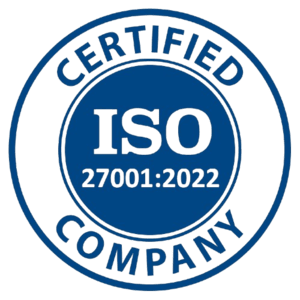Using this strategy, you may draw in quality leads and nurture them through the sales funnel, until they’re prepared to buy.

In this extensive guide, we’ll go over five effective lead-generation tactics, giving you useful advice and insights you can put into practice for your company. These methods can help you increase your lead generation efforts, whether you’re an established company or an early-stage start looking to kickstart your lead-gen program.
1. Content Marketing: The Cornerstone of Inbound Lead Generation
Any effective inbound lead generating approach starts with content marketing. It allows you to bring in a specific audience, and ultimately drive profitable consumer action. This is done by producing and disseminating information that is valuable, pertinent, and consistent.

Why Content Marketing Works:
Content marketing is effective for several reasons:
- It builds trust and credibility with your audience
- It positions your brand as an industry thought leader
- It provides value to potential customers before they make a purchase
- It improves your search engine rankings, increasing organic traffic
Types of Content to Create:
Think about producing a variety of content to get the most out of your content marketing efforts:
- Blog posts and articles
- Whitepapers and ebooks
- Infographics and visual content like videos
- Webinars and social media live events
- Podcasts
- Case studies and success stories
Best Practices for Content Creation:
Use these best practices to make sure your content speaks to your target audience and generates inbound leads:
- Recognise your target audience: To determine the interests, preferences, and pain points of your target audience, conduct in-depth research.
- Create detailed customer personas: Create thorough profiles of your ideal clients to direct your efforts when creating content.
- Prioritize quality over quantity: Make it a priority to produce in-depth, high-quality content that offers your readers genuine value.
- Search engine optimization: Use pertinent keywords and adhere to SEO best practices to raise the visibility of your content in search results.
- Consistent publishing of content: To keep your audience interested, create a content calendar and adhere to a regular posting schedule.
- Repurpose material: To get the most out of your content, consider converting it into other formats. For example, you may turn a blog article into an infographic or video.
Measuring Content Marketing Success:
Track the following KPIs to see how efficient your content marketing strategy has been in generating inbound leads:
- Website Traffic
- Time spent on page
- Social media shares and engagement
- Metrics related to lead generation, such as form submissions and email sign-ups
- Conversion rates
As you continually produce high-quality content that speaks to the requirements and pain points of your audience, you’ll build your brand’s credibility as an authority and gradually draw in more inbound leads.
2. Search Engine Optimization (SEO): Attracting Organic Traffic
The process of making your website and content more search engine friendly so that relevant keywords appear higher in search engine results pages (SERPs) is known as search engine optimization, or SEO.
Increasing the prominence of your organic search results can help you draw in more qualified leads, or prospective buyers who are actively looking for goods or services similar to yours.

The Importance of SEO for Inbound Lead Generation
SEO is crucial for driving inbound leads because:
- It increases your website’s visibility to potential customers
- It helps you target users with high purchase intent
- It provides a sustainable, long-term source of traffic
- It builds credibility and trust with your audience
Key SEO Strategies for Driving Inbound Leads
Pay particular attention to the following tactics in order to optimize your website and content for search engines :
- Researching and optimizing keywords: Determine the terms and phrases that your intended audience uses when searching online, then organically include them into your writing.
- On-page SEO: To increase relevance and readability for both users and search engines, optimize the meta titles, descriptions, headers, and content of your website.
- Technical SEO: Make sure search engines can scan and index your website quickly and easily. It should also be mobile-friendly.
- Link building: Create a plan to obtain authoritative backlinks from websites that are well-known in your field.
- Local SEO: Make sure your online presence is optimized for local search results if you have a physical location or cater to a certain area.
- Material optimisation: Produce insightful, worthwhile material that addresses the querie
Tools for SEO Success
To implement and monitor your SEO efforts effectively, consider using the following tools:
- Google Search Console
- Google Analytics
- SEMrush or Ahrefs
- Moz Pro
- Yoast SEO (for WordPress websites)
Measuring SEO Performance
Track these key metrics to evaluate the success of your SEO efforts in driving inbound leads:
- Organic search traffic
- Keyword rankings
- Click-through rates (CTR) from search results
- Bounce rate and time on site for organic visitors
- Conversion rates from organic traffic
By putting a thorough SEO strategy into practice, you can raise your website’s exposure in search results, draw in more targeted leads, and boost conversion rates.
3. Social Media Marketing: Engaging Your Audience Where They Are
Social media platforms are effective ways to establish connections with your target market, foster relationships, and generate inbound leads. Through the creation of a well-planned social media presence, you can draw in new clients, foster connections, and help them throughout the buyer’s journey.

The Role of Social Media in Inbound Lead Generation
Some ways that social media marketing helps with generating incoming leads is by:
- Increasing brand awareness and visibility
- Facilitating direct engagement with potential customers
- Providing a platform for sharing valuable content
- Offering targeted advertising options to reach specific audiences
- Enabling social proof with reviews and user-generated content
Choosing the Right Social Media Platforms
Not every business can benefit equally from every social media platform. When choosing one for your inbound lead generation initiatives, take into account following factors:
- Your target audience demographics and preferences
- The nature of your products or services
- Your content type and format
- Your available resources for managing social media accounts
Popular platforms to consider include:
- LinkedIn (ideal for B2B companies and professional services)
- Facebook (suitable for a wide range of businesses and demographics)
- Instagram (great for visual content and younger audiences)
- ‘X’, formerly known asTwitter (useful for real-time engagement and news-related industries)
- Pinterest (effective for visual products and lifestyle brands)
- TikTok (well-liked by younger viewers and for original, brief video content)
Effective Social Media Strategies for Inbound Lead Generation
Use these tactics to get the most out of your social media efforts in generating inbound leads:
- Create a unified brand voice: Develop a distinct and identifiable brand persona for all of your social media platforms.
- Distribute worthwhile content: Share a variety of informative, entertaining, and promotional content to keep readers interested.
- Interact with the people in your audience: To foster relationships and trust, engage with and reply to messages, comments, and mentions as soon as possible.
- Leverage user-generated content: Promote and highlight user-generated material to establish credibility and social proof.
- Employ advertising on social media: To target particular audience segments and increase traffic to your landing pages or lead magnets, use customized advertising.
- Organize live events: Organize webinars, in-person Q&A sessions, or product demos to engage your audience in real time.
Put social listening into practice by keeping an eye on discussions about your company, industry, and competitors to proactively find, engage with, and generate leads.
Measuring Social Media Success
To evaluate the effectiveness of your social media efforts in driving inbound leads, track these key metrics:
- Follower growth rate
- Engagement rate (likes, comments, shares)
- Click-through rates on shared links
- Referral traffic from social media platforms
- Conversion rates from social media traffic
- Social media mentions and sentiment
You can create relationships, engage your target audience more effectively, and increase the number of inbound leads, by creating a consistent and smart social media presence.
4. Email Marketing: Nurturing Leads and Driving Conversions
One of the best methods for nurturing leads and increasing conversions is still email marketing.
You can send tailored information straight to your prospects’ inboxes, assisting them in the buyer’s journey and motivating them to take action – all this by simply creating a carefully thought through email campaign and managing a high-quality email list.

The Effectiveness of Email Marketing to Generate Inbound Leads
Email marketing is essential for generating inbound leads because:
- It allows for direct, personalized communication with prospects
- When compared to numerous other marketing mediums, it is more affordable.
- It offers quantifiable outcomes and a strong return on investment (ROI).
- It allows for nuanced audience segmentation and thereby, more personalized communication.
- It helps nurture leads over time, building trust and credibility
Building a Quality Email List
A permission-based email list of superior quality is the cornerstone of any effective email marketing campaign. The following are some methods to expand your list:
- Make persuasive lead magnets: Provide useful content (such as templates, whitepapers, and ebooks) in return for email addresses.
- Make your website conversion-friendly: Strategically place sign-up forms, such as pop-ups and exit-intent forms, around your website.
- Make use of social media: To get subscribers, advertise your newsletter and lead magnets on your social media platforms.
- Organize virtual events or webinars: Enable email signup to grant access, and send out informative emails thereafter.
- Put referral programs into action: In exchange for rewards, existing subscribers are encouraged to recommend your newsletter to others in their circles.
Email Marketing Best Practices for Inbound Lead Generation
Use these recommended strategies to optimize the efficiency of your email marketing efforts in generating incoming leads:
- Segment your email list: To deliver more customized content, segment your prospects based on their choices, behavior, or demographics.
- Formulate enticing subject lines: Create compelling subject lines to get people to open your emails.
- Make mobile device optimisations: Make sure your emails are readable and responsive on tablets and smartphones.
- Make use of an eye-catching call-to-action (CTA): Point subscribers in the direction of the required activity, be it downloading an item, registering for a free trial, or completing a transaction.
- Put automation into practice: To more efficiently nurture prospects, set up triggered email sequences based on subscriber behavior or particular circumstances.
- A/B test your emails: Try a variety of subject lines, body of the email, images, and calls-to-action to see which variant performs best, and tweak your campaign based on the findings.
- Maintain a regular email schedule: To keep subscribers interested in your emails without overwhelming them, establish a consistent email cycle.
Types of Emails for Inbound Lead Generation
Incorporate a variety of email types into your strategy to effectively nurture and convert leads:
- Welcome emails
- Educational newsletters
- Product or service updates
- Case studies and success stories
- Exclusive offers and promotions
- Abandoned cart reminders
- Re-engagement campaigns for inactive subscribers
Measuring Email Marketing Success
To evaluate the effectiveness of your email marketing efforts in driving inbound leads, track these key metrics:
- Open rates
- Click-through rates (CTR)
- Conversion rates
- List growth rate
- Unsubscribe rate
- Revenue generated from email campaigns
You may build a rapport with your leads, give them insightful material, and ultimately direct them towards conversion by putting in place a systematic email marketing program.
5. Conversion Rate Optimization (CRO): Maximizing Lead Generation Effectiveness
Enhancing your website and marketing materials to increase the number of visitors that complete a desired action—like submitting a form, subscribing to a newsletter, or completing a purchase—is known as conversion rate optimization, or CRO.
You may increase the efficiency of your inbound lead generation efforts and convert more website visitors into quality leads by streamlining your conversion funnel.

The Importance of CRO for Inbound Lead Generation:
CRO is crucial for inbound lead generation because:
- It helps you make the most of your existing traffic
- It reduces your customer acquisition costs
- It enhances the way users interact with your website
- It offers insightful information on the tastes and actions of your audience.
- It increases the efficacy of your other inbound marketing initiatives by complimenting them.
Key Areas to Focus on for CRO:
Optimize these crucial areas to raise your conversion rates and produce more inbound leads:
- Landing pages: Make specialized, laser-focussed pages for particular campaigns or offers.
- Buttons with a call to action (CTA): Create distinctive, attention-grabbing CTAs that compel action.
- Forms: Simplify your forms to lower resistance and facilitate conversions for site visitors.
- Website navigation: Make sure the layout of your website is understandable and simple to use.
- Page load speed: Enhance the functionality of your website to lower bounce rates and enhance user experience.
- Mobile responsiveness: Make sure that using your website on different devices is effortless.
- Value proposition: Clearly state the special advantages of your product or service.
- Social proof: To establish credibility and trust, provide case studies, reviews, and testimonies.
CRO Best Practices for Inbound Lead Generation:
Use these recommended strategies to increase inbound lead generation and optimize your conversion rates:
- Carry out user research: Using surveys, interviews, and analytics data, learn about the wants, needs, and pain points of your target audience.
- Craft catchy headlines & copies: Use crisp, effective and valuable content and headlines to entice your target audience..
- Make use of excellent graphics: Use pertinent photos, videos, and infographics to draw readers in and make an impact on them.
- Put A/B testing into practice: Test various components of your website and marketing materials frequently to see what appeals to your target demographic the most.
- Make your form fields as efficient as possible: Ask only for what is necessary in order to reduce confusion and boost form submissions.
- Employ popups with exit intent: Offer a useful resource or incentive to leads who are ready to leave your website in order to capture them.
- Put live chat to use: By responding to queries and concerns from visitors in real time, you may boost conversion rates.
- Instill a feeling of urgency: Use scarcity strategies or time-limited offerings to entice visitors to act.
- Customize the user’s experience: Customize offerings and content according to visitor demographics, interests, and behavior.
- Enhance your ‘Thank You’ pages: Confirmation pages are an excellent place to add value and promote more interaction.
Tools for CRO Success:
To implement and measure your CRO efforts effectively, consider using the following tools:
- Google Analytics
- Hotjar or Crazy Egg (for heatmaps and user behavior analysis).
- Google Optimize or Optimizely (for A/B testing).
- Unbounce or Instapage (for optimizing and creating landing pages)
- SurveyMonkey or Typeform (for user surveys)
- UserTesting (for qualitative user feedback)
Measuring CRO Success:
Track these key metrics to evaluate the success of your CRO efforts in driving inbound leads:
- Conversion rate
- Bounce rate
- Time on site
- Pages per session
- Form completion rate
- Click-through rate (CTR) on CTAs
- Cost per lead
- Return on investment (ROI)
You can greatly enhance your inbound lead generation efforts by consistently optimizing your website and marketing materials for conversions.
This will result in a higher conversion rate of visitors into qualified leads, which will ultimately spur business growth.
Conclusion: Integrating Strategies for Inbound Lead Generation Success
In order to achieve sustainable business growth in the highly competitive digital landscape of today, a thorough inbound lead generation plan must be put into place.
You can build a strong foundation for drawing in, holding the attention of, and converting high-quality leads by integrating the five effective tactics we’ve discussed: email marketing, social media marketing, content marketing, search engine optimisation (SEO), and conversion rate optimisation (CRO).

Keep in mind that generating quality inbound leads is a continual process that needs constant improvement and tweaking.
Through the implementation of the methods mentioned above and ongoing optimisation of your strategy, your company will be in a well-positioned position to generate a consistent flow of high-quality inbound leads. It’s important to keep in mind that knowing your target market, offering value at every touchpoint, and continuing to optimize using data are the keys to success.
Remember that every business is different, so you may need to experiment and fine-tune your approach to find what works best for you as you begin your inbound lead generating journey. Try new things, learn from your mistakes and achievements, and modify your plan of action as necessary.
Frequently asked questions
Instead of contacting potential clients directly, inbound lead generation focuses on drawing them to your company with insightful content and interactions. It’s crucial because it increases prospects’ confidence and trustworthiness, which generates better leads and more steady growth.
By producing and disseminating insightful content that speaks to the wants, requirements, and pain points of your target audience, content marketing generates inbound leads. Blog entries, eBooks, infographics, and videos may fall under this category. Potential consumers are more likely to interact with your business and become leads when they find your material useful and provide you their contact information.
Enhancing the visibility of your website on search engines is one of the main ways that Search Engine Optimization (SEO) contributes to inbound lead generation. You can draw in organic search engine traffic by optimizing your website for relevant keywords, producing excellent content, and improving user experience. When potential leads are looking for solutions to their problems, this enhanced visibility makes it easier for them to reach your company.
By interacting, posting, and promoting content that is relevant to your audience, social media can help you generate inbound leads. You can increase website traffic and encourage users to submit their information by utilizing targeted adverts, engaging in pertinent conversations, and offering excellent material. In addition, social media promotes brand awareness and cultivates connections with possible customers.
Because lead nurturing entails building relationships with leads over time through tailored communication and content, it is crucial to the inbound lead process. Efficient lead nurturing facilitates the flow of leads through the sales funnel by attending to their issues, offering pertinent information, and assisting them in reaching a buying decision. It improves leads’ entire experience with your brand and raises the possibility that they will become customers.




























